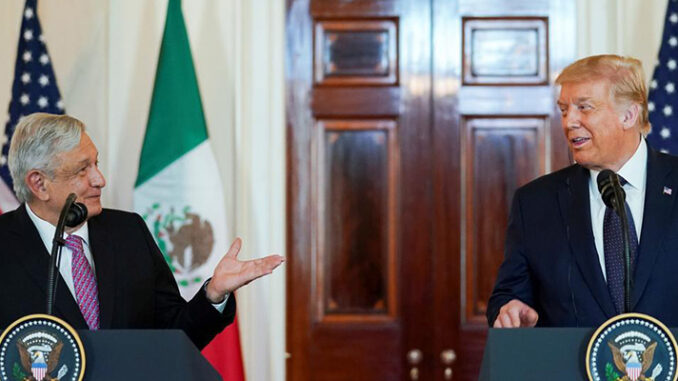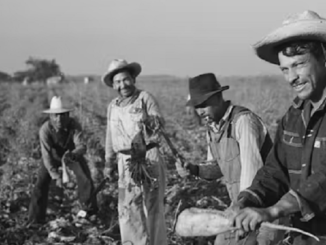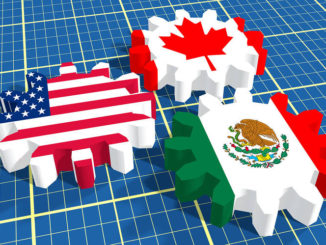
by Vanda Felbab-Brown
The July 8 visit by Mexican President Andrés Manuel López Obrador (AMLO) to the United States was characterized by a deafening silence about the wall on the U.S.-Mexico border that the Trump administration is aggressively building. Clearly, prioritizing the signing of the United States-Mexico-Canada Agreement (USMCA) was the crucial strategy for the AMLO administration, as it – appropriately – would be for any Mexican government. But now that the USMCA is in effect, it is time for the AMLO administration to defend the rights of Mexican citizens and demand compensation from the U.S. government for the damage the pointless wasteful and destructive wall will cause to them and to natural environments and biodiversity in Mexico. Mexican civil society, likewise distressingly silent on the issue, should also take up the cause.
Although Mexico never paid for the wall (as Donald Trump absurdly demanded as both candidate and president), the wall has vast harmful effects on Native Mexican communities, highly sensitive natural environments and biodiversity, and water sustainability in Mexico.
No public health or public safety benefits are derived from the wall for the United States or Mexico. Guns smuggled to Mexico from the United States are mostly smuggled through legal ports of entry (and can also be smuggled by boats on the sea). Moreover, traffickers easily transcend the wall – actuality tall steel bollards – in both directions by climbing over the wall, digging tunnels under it, or cutting holes through it. In just one month last fall, smuggling crews, using ordinary and easily accessible battery-operated tools costing as little as US $100, cut 18 holes through the bollards large enough to allow adults to crawl through. Since they push back the separated bollards to hide their entry points, the actual number of smuggling points may be far larger.
With U.S. presidential elections approaching, the Trump administration is making a renewed push to fence off the 2,000-mile U.S. border with Mexico, promising to add more than 500 miles of new barriers by early 2021. As of May 2020, 170 miles had been built, mostly replacing previous fencing in other parts of the country. (Another 480 border barriers were built by previous administrations.) Every mile built hurts Mexico in some ways.
First among the negatively affected are Native Mexican communities. President López Obrador has long presented himself as their champion, yet the Native Mexican communities along the border with the United States are among the most marginalized. Some, such as the Tohono O’odham Nation in Mexico, are not supported by the Mexican government like their U.S. members are, nor do they enjoy the protections and autonomy accorded to other Native Mexican peoples.
The 1848 Treaty of Guadalupe Hidalgo and the 1853 Gadsden Purchase divided and separated the traditional homelands of 36 Native natives recognized by the United States government, including the Tohono O’odham, Kumeyaay, Pai, Cocopah, Yaqui, Apaches, and Kickapoo people. The wall further separates these communities, desecrates their burial lands and sacred sites, prevents families from visiting with each other, and devastatingly hampers their cultural and religious practices, such as rites of passage and pilgrimages. It also drastically undermines the economic livelihoods of the communities, preventing them from trading among themselves, and accessing essential water resources on the other side of the border. Members of Tohono O’odham in Mexico are eligible to receive medical services and education in the United States, but the wall now eliminates those vital opportunities they lack in Mexico without any compensation.
Typical of its utter disregard for the rule of law, environmental protection, and public health, the Trump administration has waived more than 35 federal laws to fast-track the construction of the wall, including the Endangered Species Act and National Environment Protection Act. The resulting disastrous environmental consequences are pronounced on the Mexican side of the border. The construction of the wall threatens some of North America’s most biologically diverse regions, where southern species such as jaguars, ocelots, jaguarundis, and coatis reach their northernmost edge and northern species, such as black bears, wolves, bison, and pronghorn, their southernmost. Unique subspecies have become localized and are highly vulnerable as a result of pre-existing habitat destruction. Among the most sensitive environmental areas spanning both sides of the border are the Sky Islands in Arizona and New Mexico, the Big Bend National Park ecosystem in Texas, the Sonoran Desert, and the Lower Rio Grande.
The vastly harmful negative effects include threats to species survival; habitat fragmentation that further compounds threats to biodiversity in multiple ways; interruption of hydrological and natural vital micro-climate processes; obstruction of animal access to water; water depletion; soil erosion, threats to animal dispersion and migratory movements, interruption of genetic exchange; proliferation of noxious and invasive fauna and flora; electric lighting and noise contamination. Altogether, some 93 endangered or threatened species of animals will be severely affected and may be pushed to extinction by the wall; so will unique plant species, such as precious organ pipe, saguaro, and coryphantha werdermannii cacti. Many of these disruptions, such as interference with the nocturnal movements of pollinators, also have negative effects on local agriculture.
The wall also obstructs the healthy functioning of rivers traversing the U.S.-Mexican border, including the Rio Bravo (known in the U.S. as the Rio Grande). It creates new hydrological obstacles and exacerbates catastrophic flood risks for Mexican cities, such as Miguel Alemán in Tamaulipas, a city already hammered by persistent criminal violence. The border bollards also could deflect river waters from Mexico, compounding already massive droughts and river water depletion in northern Mexico and undermining both agriculture and precarious and battered ecosystems there as well as on the U.S. side. Soil erosion as a result of the wall’s construction, permanent vegetation clearing to enhance visibility along the wall, and the use of heavy machinery affect not only the surface water but also damage border aquifers, with a cascade of negative effects on water access and sustainability, local economies, and natural environments. Already, U.S. attorneys from the exemplary International Boundary and Water Commission that regulates water distribution between Mexico and the United States sued a private company building a private segment of the wall in Texas. The design of the private segment of the wall has such disastrous water and flooding effects and is already collapsing due to soil erosion, that even President Trump has (hypocritically) distanced himself from the private construction mess. This despite the fact that his administration had accorded the company large federal contracts for building the wall elsewhere.
That 3-mile private wall fiasco is just a preview of human and environmental consequences of the wall. Many more disasters for the environment and people are under way as a result of the wall construction. Now is the time for the AMLO administration and Mexican civil society to develop some spine and start doing their part to slow down and prevent the construction of the wall — by suing the Trump administration and demanding compensation for the damaged wreaked in Mexico, and mounting mitigation measures to support natural ecosystems and Native Mexican peoples on the border.
Vanda Felbab-Brown is a senior fellow in the Center for 21st Century Security and Intelligence in the Foreign Policy program at Brookings.
.



